Old Ways for Modern Times
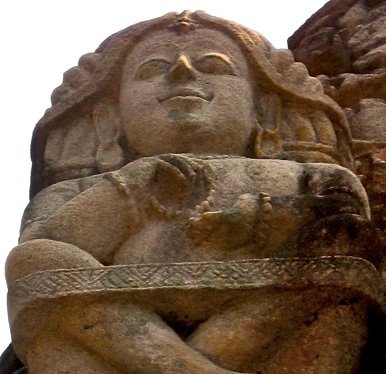 As an advocate for spending more time on the floor, I was thrilled to be recently introduced to the original yoga prop: the strap. Unlike the modern version of a yoga strap, which is frequently used as a prop in Indian hatha yoga classes for a variety of purposes, the original yoga strap was usually made of soft, wide fabric and its primary purpose was to make sitting on the ground for long periods more comfortable.In our modern times, unless you are regularly doing some kind of mind-body movement practice or working with animals or small children, sitting on the ground or floor for long periods is just not done. Why? Because it's not comfortable! Why? Because we don't sit on the ground enough!Being able to be comfortable on the ground has many benefits for your health, including greater strength and flexibility in important places like the core, gluteal and hip muscles, but it also has many life enrichment benefits, like easier picnicking, camping and self-massage.There are many ways to use the strap to extend your period of comfort on the ground. All you need is a long, wide piece of soft fabric, such as a scarf, and a little floor space. Here's how:
As an advocate for spending more time on the floor, I was thrilled to be recently introduced to the original yoga prop: the strap. Unlike the modern version of a yoga strap, which is frequently used as a prop in Indian hatha yoga classes for a variety of purposes, the original yoga strap was usually made of soft, wide fabric and its primary purpose was to make sitting on the ground for long periods more comfortable.In our modern times, unless you are regularly doing some kind of mind-body movement practice or working with animals or small children, sitting on the ground or floor for long periods is just not done. Why? Because it's not comfortable! Why? Because we don't sit on the ground enough!Being able to be comfortable on the ground has many benefits for your health, including greater strength and flexibility in important places like the core, gluteal and hip muscles, but it also has many life enrichment benefits, like easier picnicking, camping and self-massage.There are many ways to use the strap to extend your period of comfort on the ground. All you need is a long, wide piece of soft fabric, such as a scarf, and a little floor space. Here's how:
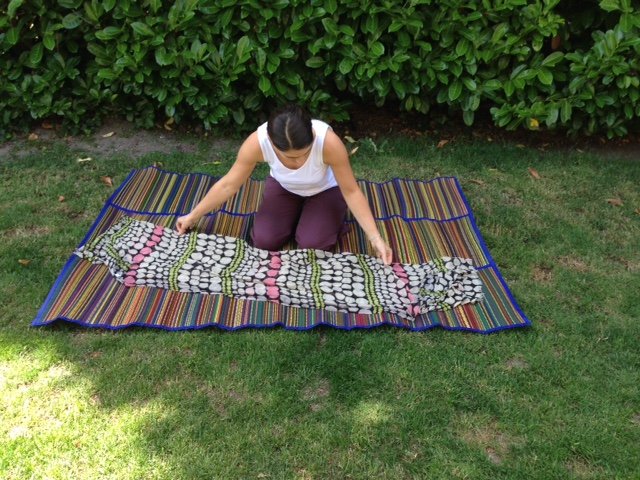 |
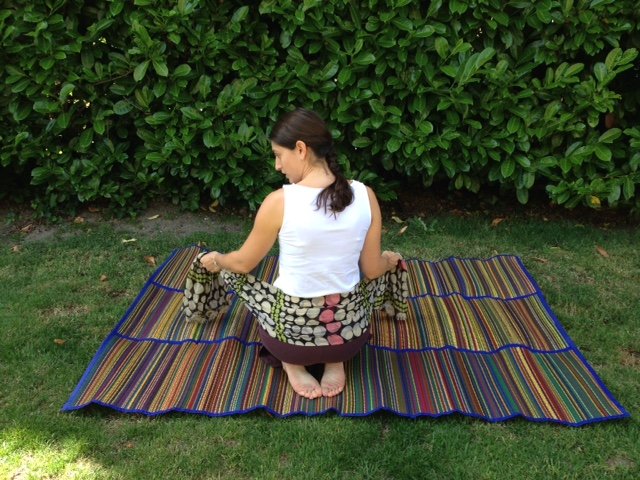 |
| Step 1: Choose a long piece of fabric and fold it length-wise to about a foot wide. | Step 2: Position the fabric so that it covers the low back and top of the sacrum. |
Step 3: Bend knees and bring them in as close as possible toward chest. Bring the ends of the fabric forward and tie a knot securely in front of your knees. Make the knot as close to your body as possible. This size loop in the fabric should work for a variety of postures/uses.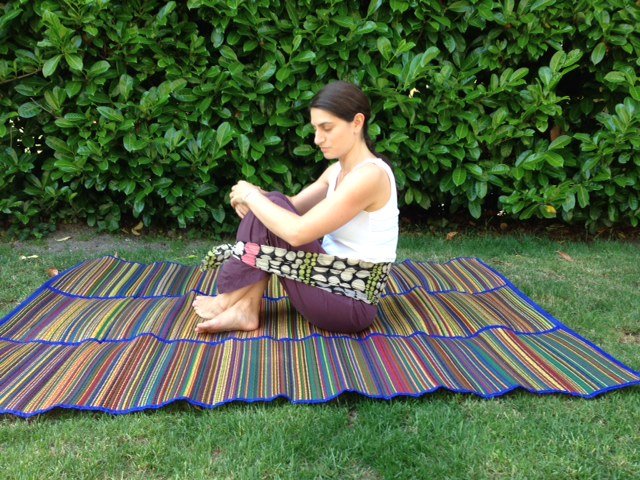 Option One: After tying the knot in the fabric, simply cross your ankles and let your knees open.
Option One: After tying the knot in the fabric, simply cross your ankles and let your knees open.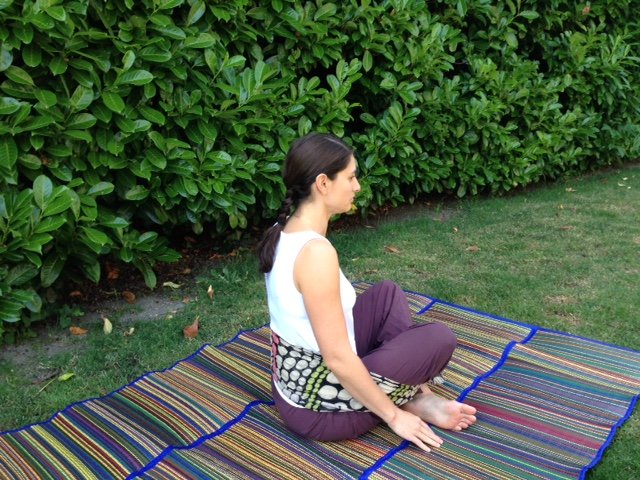 Option Two: Push the fabric down lower to allow your knees to sink lower and your lower legs to cross.
Option Two: Push the fabric down lower to allow your knees to sink lower and your lower legs to cross. Option Three: Move the back of the fabric higher up the back to catch just one knee in an easy cross-legged seat.
Option Three: Move the back of the fabric higher up the back to catch just one knee in an easy cross-legged seat. Option Four: Catch one knee with bound angle-style legs.
Option Four: Catch one knee with bound angle-style legs. Option Five: Catch the forward knee with mermaid style legs.Many thanks to David Wells for sharing the first photo, from Bhumpaneshwar, India, statue circa 800 AD
Option Five: Catch the forward knee with mermaid style legs.Many thanks to David Wells for sharing the first photo, from Bhumpaneshwar, India, statue circa 800 AD

